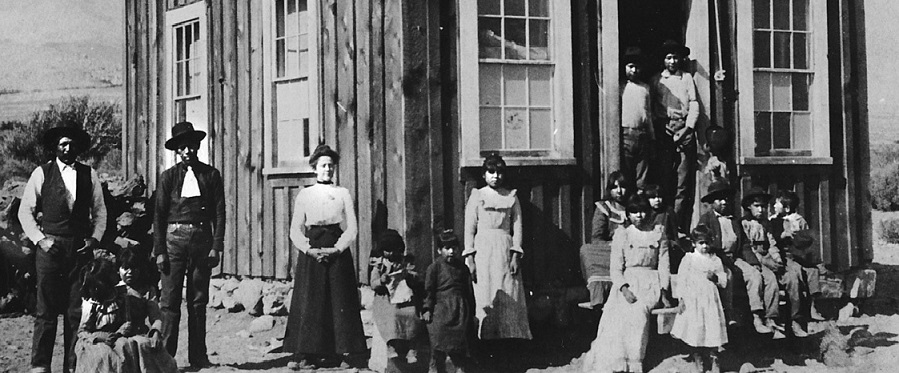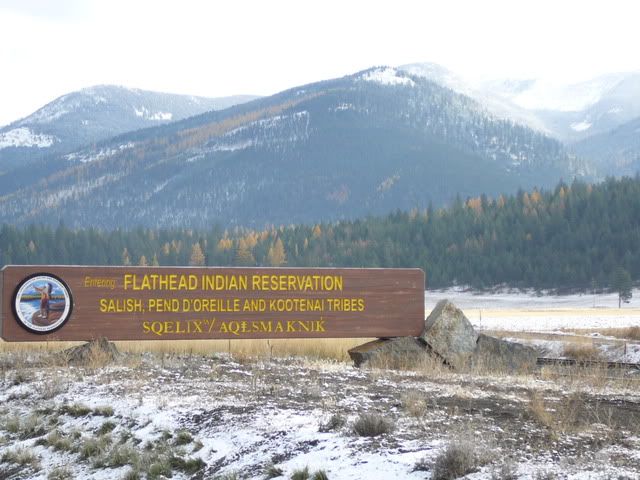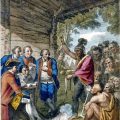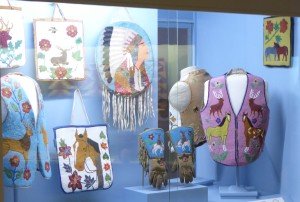
During the nineteenth century, the United States had attempted to settle all Indians on well-defined reservations on lands deemed unsuitable for non-Indian development. Here Indians were to remain until they became extinct or had fully assimilated into the Christian American lifestyle. By the end of the nineteenth century, the government began the process of dismantling Indian reservations and increasing the pressures to assimilate. By 1915, a majority of Indians still lived on reservations where they were considered wards of the government. Briefly described below are a few of the events of 1915 which are related to Indian reservations.
The Indian Peaks Reservation in Utah was established by executive order for the Indian Peaks Band of Paiute. The band was formed of the remnants of several other Paiute bands, including the Paragoo, Pahquit, and Tavarsock.
By executive order of President Woodrow Wilson 32 acres in Aitkiin County, Minnesota were set aside as a reservation for the Sandy Lake Band of Chippewa.
In Oregon, the first Siletz Indian Fair was held. Agency superintendent Edwin Chalcraft reports: “We proposed to have an all Indian fair, both in exhibits and management, if possible, and that it should be [run] on the most progressive lines without games of chance of any kind on the grounds.”
The fair included a play adapted from Longfellow’s Hiawatha with an all-Indian cast. The Oregonian reports: “The Siletz Indian Fair was unique because it combined the barbaric implements and manufactured articles of an uncivilized age with present productions of educated people, from which all trace of the uncivilized Indians has been erased.”
In Arizona, the Bureau of Indian Affairs hired a field matron for the Tohono O’odham whose primary job was to recruit Indian women to become servants in non-Indian households. The matron was to impart Anglo standards of behavior among Tohono O’odham women.
The Bureau of Indian Affairs reported that the Tohono O’odham in southern Arizona had a population of 5,000 living in 104 villages. According to the report: “We cannot go into their country with the idea of teaching them farming or irrigation under conditions as we find them. Rather should we go to them to be taught.”
In Montana, only 24 families were farming 480 acres in the area served by the “Birney Ditch” irrigation project on the Northern Cheyenne reservation. The Bureau of Indian Affairs, pointing to the “success” of farming and cattle raising, reduced rations on the reservation as a part of their plan to promote economic self-reliance. The policy ensured that the Northern Cheyenne would remain malnourished.
In Montana, the Blackfeet Tribal Business Council (BTBC) was formed to replace the Tribal Business Committee. Robert Hamilton was elected president. Several tribal members protested Hamilton’s position on the BTBC.
In Montana, the superintendent for the Fort Belknap Reservation cabled the Commissioner of Indian Affairs: “About entire flow Milk River being diverted by white appropriators above our diversion point.”
In other words, non-Indians continued to ignore the Supreme Court ruling – the Winters Doctrine – giving the Indians the water rights.
In Arizona, the City of Phoenix constructed a pipeline across the Fort McDowell Reservation and began diverting Yavapai water from the Verde River for use by Phoenix residents. Yavapai water rights were ignored, the pipeline built without their permission, and they received no compensation for the stolen water until 1922.
In Nebraska, the Omaha asked for a total of 48 acres on which to bury their dead. At a second tribal council meeting, the request was raised to 78 acres to be located in two different areas of the reservation. The Department of the Interior agreed that the present Omaha cemetery was inadequate and prepared a request to submit to Congress.
In Idaho, the Shoshone and Bannock of the Fort Hall reservation sent Alex Watson to Washington, D.C. to complain to government officials about the agency abuses of power on their reservation. He demanded that Indians have some say about their future. There was no immediate response to his demands.
In Mississippi, influenza and pneumonia killed many Choctaw. The impact of the diseases was greater because of poor housing and nutrition. Their desperate condition was called to the attention of the Bureau of Indian Affairs.
In Montana, Cheyenne war woman Epyophsta (Yellow-head Woman) died. George Bird Grinnell, in his book The Cheyenne Indians: Their History and Lifeways, writes: “She took a prominent part in an important battle between the Cheyennes and the Shoshonis in 1868, at which time she counted coup on one Shoshone and killed another.”
In Nebraska, Omaha physician Dr. Susan LaFlesche died at the age of 50. She was the first Indian woman to graduate from medical school and to practice medicine.




Leave a Reply